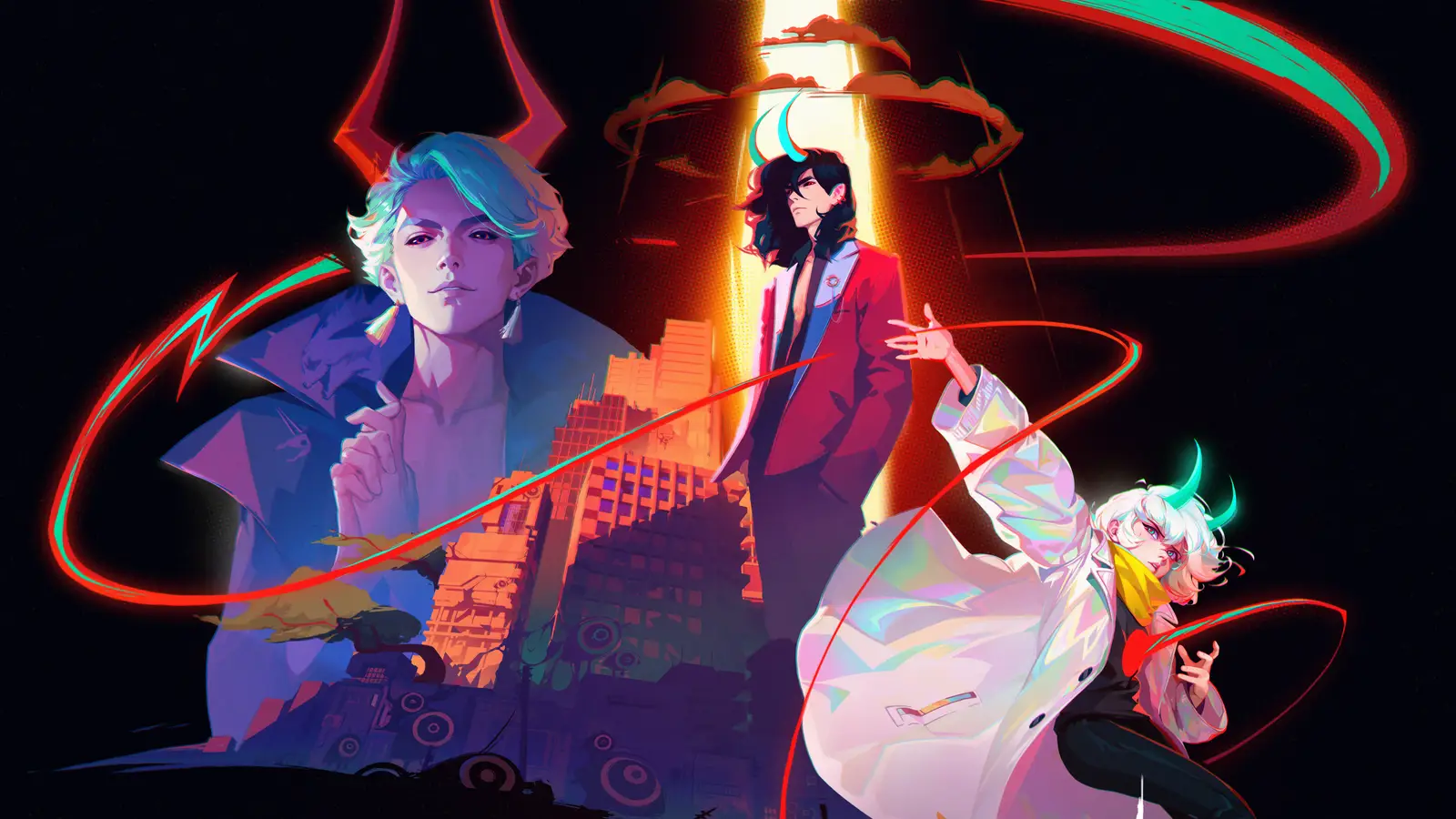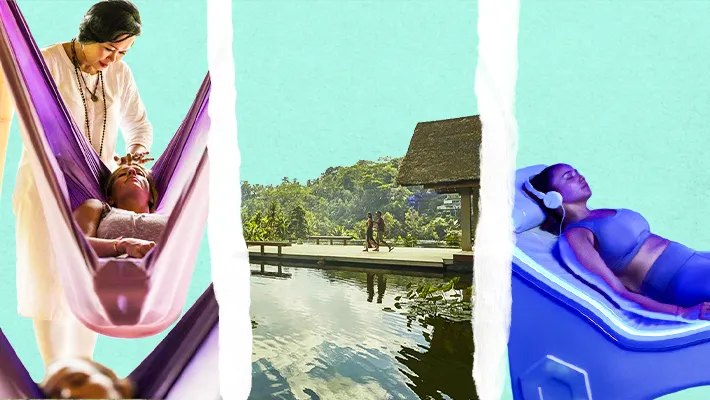Copyright Polygon

“Let’s get lost,” I say when out and about. Despite living in New York City for nearly a decade, there are streets I’ve yet to traverse, neighborhoods I’ve yet to roam. (You could say it’s kind of a big city.) I enjoy taking new routes to familiar destinations and “getting lost” along the way — though, of course, having Google Maps in my pocket at all times prevents me from getting actually, terrifyingly, lost. I never know what I might run into, like the first time I pleasantly stumbled on the Ghostbusters firehouse in Tribeca many years ago. Getting lost in a video game can evoke similar feelings of pleasantly stumbling on new discoveries, whether that be new power-ups, hidden pathways, or Easter eggs. Though, even when getting lost in a game, there’s often still an invisible guiding hand shepherding you where you need to go. I’ve yet to find that guiding hand in Heart Machine’s Possessor(s). It’s the latest from the developer behind Hyper Light Drifter, and once again finds Heart Machine experimenting with new ideas: this time, with a 2D Metroidvania. Freedom to explore is at the heart of the genre, and where Possessor(s) ends up falling short. To play it is to explore a city where every turn leads to truncated alleys and locked doors. Possessor(s) begins with a short table-setting sequence. Sanzu City is beset by an invasion of demons, during which high school student Luca loses her legs — and her best friend. Barely hanging on, she makes a pact with the wounded demon Rhem to restore her legs in return for helping him head home. Three years later (apparently that’s how long it took Rhem to give Luca some metal prosthetic legs) she sets out into a post-apocalyptic land where everyday objects, like filing cabinets and books, are possessed by demons trying to kill Luca. After a somewhat linear path through the Skyscraper Remnants, the map opens up as Luca and Rhen must search Sanzu for four eyeballs needed to gain access to mega-corporation Agradyne’s vault. In that vault? Rhem’s way home. The four eyeballs are tremendously scattered across Sanzu; Possessor(s)’ map is huge. There’s no real indication which eyeball is best to go after first, so I just explored what Sanzu had to offer. That exploration, however, led to a multitude of dead ends with no solutions in sight and a feeling of aimlessness. While Metroidvanias are all about the cycle of exploration and discovering new pathways, there’s an art to giving players a nudge in the right direction, like the underrated Tales of Kenzera: Zau and its somewhat linear main path. Including a feature like Prince of Persia: The Lost Crown’s screenshot map markers would go a long way for Possessor(s) and help to clean up some of its unnecessary run backs — was that pathway unexplored because I just missed it, or because I didn’t have the proper tools? Guess I have to waste time trekking back to see. Possessor(s) isn’t helped by its long runbacks to fast travel locations either. Those well-worn paths are littered with enemies that are exciting to face the first time around, and less so the tenth. It’s not that Possessor(s)’ combat is bad by any means, just that it begins to wear thin from repetition; at some point, enemies will stop posing a challenge and transition to being minor annoyances in your way of seeking out missed pathways. The combat also isn’t helped by a lack of weapon choices, making it ultimately feel rather rote. Luca starts with a pair of knives, and it took several hours for me to find a new weapon in the form of an electric guitar, though I have found plenty of special abilities, like leaping forward to swing a katana or tossing three daggers at enemies while Luca hangs back. Scouring the city for some sort of main path, bludgeoning the same enemies time and time again along the way, leads to hours of aimless wandering. I scream out for a guiding hand to just tell me where to go, tell me where the next ability unlock is. I’m only met by screaming books attacking me from above. It took nearly 10 hours for the game to really open up for me. Until that point, I had reached dead ends and locked doors in every section of the map I had explored. I zoom in on the in-game map, scouring every room for unexplored paths. Hovering over the Abandoned Mall, it looks like I had initially missed a potential path en route to exploring the Campus Hill and its secrets. I head to that path and finally feel like I’m making progress for the first time. After exploring the mall, I face a boss who, after being defeated, becomes an allied merchant. Suddenly, all the items I had collected up to now have a usable purpose; I can turn them into the merchant to upgrade my health, painkiller (your healing item) capacity, and potency of those painkillers. I get a key that unlocks a previously closed-off area. Real progression is being made, though it only occurs after hours of frustrating, fruitless, exploration. Because Possessor(s) allows the player to go anywhere, the personal parts of its story are disjointed at times. You can play for hours running around its map and not encounter anything that progresses the plot. When you do, the story moves forward by looking back; flashbacks are scattered about, allowing Luca and Rhem to explore various memories of the other. Neither one is too talkative, and both bristle at the idea of opening up. Possessor(s)’ storytelling strength is found in its broader, anticapitalistic themes; Agradyne is a stand-in for Amazon and all the other corporations trying to take over our real world. There’s a clear divide in Sanzu between the haves and the have nots, of which Luca is one. At least moving from story beat to story beat, location to location is a feast for the eyes. Possessor(s) is nothing if not beautiful, like all of Heart Machine’s works. Sanzu may be a bit of a hellscape at this time, but it’s a visually striking hellscape. Early on, Luca runs across a street with a bright orange gash splitting the sky, which made me stop to admire it at first blush. Luca also traverses an aquarium, her old school, and dockyards, among other locales. Possessor(s) turns those mundane places into dangerous, destroyed areas that are hauntingly beautiful. That visual strength lends itself to creature designs as well. Enemies are objects possessed by demons, like traffic cones (those pesky, annoying, goddamn traffic cones) or potted plants. Those ones often appear rather normal, whereas flying globes will blink at you with demonic eyes. (In fact, there are a lot of creepy-ass eyes in Possessor(s) — no thanks.) One enemy that pops up a lot is a figure made of computer mice with a monitor as a head, like a robot from Saga. A personal favorite are the sharks with legs that’ll chase after you like they’re bulls and you’re high-tailing it through the streets of Pamplona, Spain. It’s a shame, then, that Possessor(s)’ strengths can’t overcome the frustrations in exploring its beautiful world. Though there’s plenty to gawk at while scouring its Metroidvania labyrinth, Possessor(s) just misses out on the joy of getting lost, turning its world into a maze with no clear way out.



